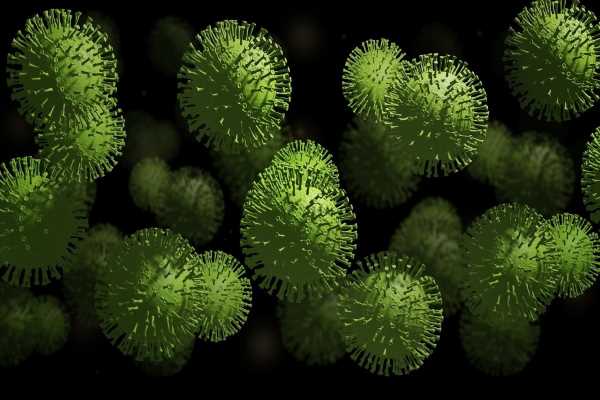A recent study published in PLoS Biology revealed that the replication of the ancestral strain of severe acute respiratory syndrome coronavirus 2 (SARS-CoV-2) is less efficient in the nasal epithelial cells (NECs) of children.

Background
Pediatric coronavirus disease 2019 (COVID-19) patients typically develop milder symptoms than adults. Mounting evidence indicates that the pediatric population is less susceptible to SARS-CoV-2 infection with the ancestral strain. Nevertheless, the proportion of pediatric cases has increased substantially with the emergence of SARS-CoV-2 variants of concern (VOCs). Whether this increase is a consequence of adult vaccination or the fundamental changes in SARS-CoV-2 is still unclear.
There is evidence that NECs in children are fundamentally different compared to adults. Lower expression of angiotensin-converting enzyme 2 (ACE2) and transmembrane protease, serine 2 (TMPRSS2) genes in the nasal epithelium of children has been observed compared to adults. However, this has not been validated at a protein level. In addition, it is speculated that the innate response to SARS-CoV-2 might differ fundamentally between children and adults.
The study and findings
The present study investigated the differential infection kinetics and immune responses to SARS-CoV-2 in children and adults using primary NECs. Pediatric and adult NECs were differentiated at the air-liquid interface and assessed at baseline for the cellular phenotype. Adult NECs grew as pseudostratified columnar epithelium with ciliated epithelial cells and scattered goblet cells.
Likewise, pediatric NECs grew as pseudostratified columnar epithelial cells with ciliated epithelial and goblets cells. Nevertheless, scattered cells with condensed cytoplasm and pyknotic nucleus were also noted, potentially indicating a higher metabolic and turnover rate in pediatric cells. Immunofluorescence staining revealed lower surface levels of ACE2 on pediatric NECs than on adult NECs.
Although western blotting confirmed this trend, it was not statistically significant. There was no trend in the levels of TMPRSS2 between pediatric and adult NECs. Viral replication was significantly reduced in pediatric cells at 24- and 48 hours post-infection (hpi) with the ancestral SARS-CoV-2 strain. Reduced levels of the viral nucleocapsid (N) protein were also noted at 24- and 72-hpi. Although a similar trend was evident with mRNA expression, it did not reach statistical significance.
There were no significant differences in ACE2 levels after infection between pediatric and adult cells. RNA sequencing was performed on pediatric and adult cells at 72 hpi. Principal component analysis (PCA) showed that infected cells formed distinct clusters. Many genes were differentially expressed in infected cells.
The gene ontology (GO) enrichment analysis of pediatric cells showed a robust interferon (IFN) response with GO terms like – type I IFN signaling, cellular response to IFN-α, regulation of defense response to the virus, and negative regulation of viral replication among others. In contrast, terms such as cellular response to sterol, response to tumor necrosis factor, and Wnt signaling pathway were recorded for adult NECs.
The authors assessed the gene expression of three genes involved in antiviral/inflammatory response by quantitative polymerase chain reaction (qPCR). The investigated genes were C-X-C motif chemokine ligand 10 (CXCL10), IFN-induced protein with tetratricopeptide repeats 1 (IFIT1), and IFN-stimulated gene 15 (ISG15).
Infected pediatric cells had significantly increased levels of IFIT1 relative to NECs in adults. Moreover, pediatric NECs also exhibited higher protein levels of IFN-α, IFN-β, and CXCL10 but varied between donors, and this did not reach (statistical) significance.
Furthermore, the team infected (pediatric and adult) NECs with SARS-CoV-2 Delta and Omicron variants. They noted significantly higher titers of viral RNA and infectious viral particles in adult cells at 24 hpi relative to pediatric cells. Notably, a similar trend, although non-significant, was observed with the infectious titers of SARS-CoV-2 Omicron, but no differences in (Omicron) RNA levels were noted between pediatric and adult cells.
Conclusions
The findings indicated that pediatric nasal epithelium might be critical in reducing children’s susceptibility to the ancestral strain SARS-CoV-2. Replication of the ancestral strain was consistently lower in pediatric cells than in adult NECs. Consistent with the lower replication, pediatric cells mounted a more pronounced inflammatory response.
However, why a more robust antiviral/inflammatory response is mounted by pediatric than adult NECs needs further investigation. Besides, SARS-CoV-2 Delta replication was significantly better in adult cells than in pediatric NECs. This meant that any surge in pediatric COVID-19 cases during the Delta wave was unlikely to be attributed to the variant’s increased evasion from innate immunity.
Further, SARS-CoV-2 Omicron replication was less efficient than the Delta variant in the adult cells, suggesting that the variant has no replicative advantage over Delta in the upper respiratory tract of adults. Instead, the higher transmissibility of Omicron might be due to the increased antibody evasion. Overall, the results showed lower infection/replication of ancestral SARS-CoV-2 in the pediatric nasal epithelium, albeit this might not persist for long, given the ongoing viral evolution.
- Zhu Y, Chew KY, Wu M, et al. (2022). Ancestral SARS-CoV-2, but not Omicron, replicates less efficiently in primary pediatric nasal epithelial cells. PLoS Biology. doi: 10.1371/journal.pbio.3001728 https://journals.plos.org/plosbiology/article?id=10.1371/journal.pbio.3001728
Posted in: Medical Science News | Medical Research News | Disease/Infection News
Tags: ACE2, Angiotensin, Angiotensin-Converting Enzyme 2, Antibody, Chemokine, Children, Coronavirus, Coronavirus Disease COVID-19, covid-19, CXCL10, Cytoplasm, Enzyme, Evolution, Gene, Gene Expression, Genes, immunity, Interferon, Ligand, Necrosis, Omicron, Phenotype, Polymerase, Polymerase Chain Reaction, Protein, Respiratory, RNA, RNA Sequencing, SARS, SARS-CoV-2, Serine, Severe Acute Respiratory, Severe Acute Respiratory Syndrome, Signaling Pathway, Syndrome, Tumor, Tumor Necrosis Factor, Virus

Written by
Tarun Sai Lomte
Tarun is a writer based in Hyderabad, India. He has a Master’s degree in Biotechnology from the University of Hyderabad and is enthusiastic about scientific research. He enjoys reading research papers and literature reviews and is passionate about writing.
Source: Read Full Article
